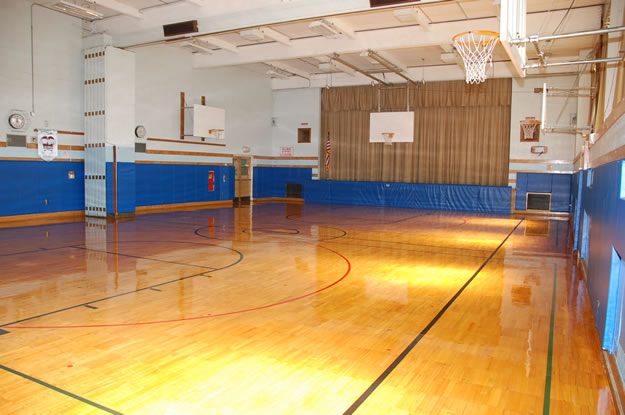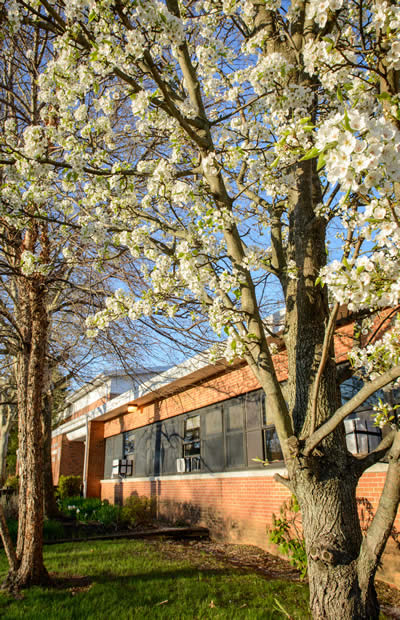Capital Projects Proposition on Huntington Ballot

A capital projects proposition will appear on the Tuesday, May 17 ballot in the Huntington School District. Trustees voted to ask residents to release monies held in the district’s Building Improvement Fund to finance various renovation and reconstruction projects.
Much of the work involves improvements and renovations to all eight school buildings in the district to bring restrooms, doorways, office counters, locker rooms and entrance ways into compliance with the Americans with Disabilities Act. The projects have been estimated to cost $1.585 million.
The proposition also includes replacement of the main electric panel and foundation repairs at Huntington High School, installation of a security vestibule at Jefferson Primary School and installation of fire-rated doors at J. Taylor Finley Middle School, Flower Hill Primary School and Jack Abrams STEM Magnet School. The original 1968 clock system at Jack Abrams STEM Magnet School would also be replaced with a new wireless clock system if the proposition is approved by voters. This second group of projects is estimated to run $851,000.
The estimated price tag for all the projects is $2.436 million, but district officials are hopeful that the competitive bidding process will lower the eventual cost. Should voters approve the proposition, district architects will draw up plans for each of the projects and seek bids. The plans will also be submitted to the State Education Department for its review and approval.
 “The second proposition on the May 17 ballot (the first being the budget itself) will cost voters nothing,” Huntington Superintendent James W. Polansky said. “If approved, it will allow for the release of existing funds from the district’s Building Improvement Fund (capital reserve) to complete an array of targeted projects, the majority of which would address requirements of the Americans with Disabilities Act (ADA) of 1990. More specifically, every building would be retrofitted with one or more ADA-compliant ramps and/or restrooms to ensure that each offers equal access to all who enter or use the facility. Monies in the Building Improvement Fund can be used only for capital projects and, again, because the funds are already there, their release will have no impact on the tax levy or tax rate.”
“The second proposition on the May 17 ballot (the first being the budget itself) will cost voters nothing,” Huntington Superintendent James W. Polansky said. “If approved, it will allow for the release of existing funds from the district’s Building Improvement Fund (capital reserve) to complete an array of targeted projects, the majority of which would address requirements of the Americans with Disabilities Act (ADA) of 1990. More specifically, every building would be retrofitted with one or more ADA-compliant ramps and/or restrooms to ensure that each offers equal access to all who enter or use the facility. Monies in the Building Improvement Fund can be used only for capital projects and, again, because the funds are already there, their release will have no impact on the tax levy or tax rate.”
The projects and the initial estimate of their cost include:
Huntington High School
• Replace of main electric panel: $300,000
• Installation of ADA-compliant locker room restrooms: $120,000
• Repairs to the building foundation: $30,000
• Installation of an ADA-compliant wheelchair lift: $25,000
• Installation of ADA-compliant ramps: $20,000
Total: $495,000
J. Taylor Finley Middle School
• Installation of ADA-compliant restrooms: $300,000
• Installation of ADA-compliant ramps: $175,000
• Installation of fire-rated doors: $56,000
Total: $531,000
Woodhull Intermediate School
• ADA-complaint renovations, including restrooms and the main office counter: $50,000
• Installation of ADA-compliant ramps: $50,000
Total: $100,000
Jack Abrams STEM Magnet School
• Installation of ADA-compliant restrooms: $250,000
• Installation of fire-rated doors: $250,000
• Installation of ADA-compliant ramps: $200,000
• Replace of the original 48 year old clock system with a wireless system: $100,000
Total: $800,000
Flower Hill Primary School
• Installation of ADA-compliant restrooms: $50,000
• Replacement of doors: $40,000
Total: $90,000
Jefferson Primary School
• Installation of ADA-compliant ramps: $150,000
• Installation of ADA-compliant restrooms: $100,000
• Installation of an entryway security vestibule: $75,000
Total: $325,000
Southdown Primary School
• Installation of ADA-compliant restrooms: $50,000
Total: $50,000
Washington Primary School
• Installation of ADA compliant restroom and doorway: $45,000
Total: $45,000
Grand total for all projects: $2,436,000
If voters support release of the funds, taxes will not increase since the monies are already in place. No new revenues are required. The funds represent dollars already provided to the district by taxpayers that, because of tight fiscal management and economizing, weren’t needed to pay for regular school operations. The source of the funding is the annual transfer of surplus monies from the district’s general fund.
Monies in the Building Improvement Fund can only be used for capital projects, including new school roofs, windows, doors, boilers, facility improvements, etc. Completed projects are eligible for state aid. Residents previously voted to allow the transfer of up to $10 million of surplus monies into the fund over the life of its authorization.
